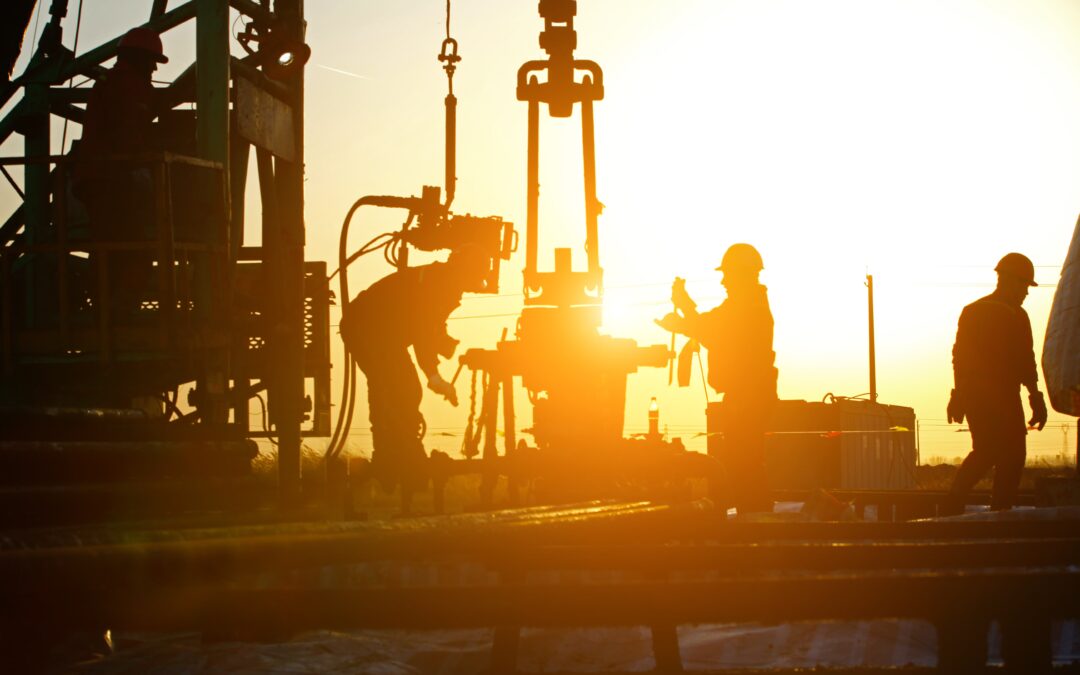Oil drilling is a complex process that involves a wide range of equipment and technologies. One critical component in oil drilling is valves, which control the flow of drilling fluids and gases within the wellbore.
At Drillmax®, we specialize in manufacturing high-quality blue drill pipe float valves, mud gate valves, and shear relief valves essential for safe and efficient drilling operations. Keep reading as we discuss the various aspects of oil drilling and how our valves are crucial in ensuring smooth and productive drilling operations.
HOW IT WORKS: OIL & NATURAL GAS DRILLING & EXTRACTION
Oil and natural gas are found deep beneath the surface of the earth. These deposits are millions of years old and are made from the remains of tiny plants and animals that died, decayed over time, and were compacted into layers. These sediment and organic materials layers, put under heat and extreme pressure, eventually resulted in oil and natural gas deposits.
To retrieve the natural gas and oil, drills are used to safely extract the products from the deep deposits. The process has been refined over the years, but these four steps remain the same.
STEP 1: DRILL SITE PREPARATION
Drill site preparation is an essential first step and does not only mean leveling the site but also includes surveys, environmental impact studies, investigating leases, and researching right-of-way access. Once all the legalities are satisfied, the land can be cleared, leveled, and ready for drilling. If roads or water sources are not available, they must be constructed.
STEP 2: DRILLING
The second step involves getting the drill onsite and drilling the well. The drill rig is large and is usually transported on multiple trucks. Once assembled, the first step is to drill a surface hole straight down about 100 feet. Precautions are made to prevent the risk of pollutants. The long hole is then drilled to a depth sufficient to reach the rock bed containing the oil and natural gas. The drill then proceeds horizontally along that bed for a long distance to capture oil and natural gas that can be accessed in the same rock bed without drilling additional wells.
STEP 3: CEMENTING & TESTING
When the distance is reached, the drill pipe is removed. Steel pipe is pushed to the bottom. Cement is used to hold the well casing in place, reducing the risk of any environmental impact. Multiple testing is performed to ensure the integrity of the casing.
STEP 4: WELL COMPLETION
A perforating gun is then lowered into the ground and fired into the deepest rock layer, creating holes that connect the rock holding the oil to the wellhead. Drilling can then commence.
COMMON GAS VALVES AND WHY THEY ARE USED
Several gas valves are commonly used in oil drilling. Drillmax® manufactures a full line of drill pipe float valves, gate valves, and shear relief valves engineered for optimum performance and reliability.
DRILLMAX® DRILL PIPE FLOAT VALVES
Drillmax® has a full line of drill pipe float valves for standard service. These “blue valves” prevent debris such as fluids, metal, and cutting from flowing back up the drill string.
DRILLMAXPRO® HP FLOAT VALVE
Designed to handle up to 10,000 psi, DrillmaxPro® HP float valves have a stronger cage and internal parts to withstand high-pressure drilling.
DRILLMAX ® GATE VALVES
Drillmax® Gate Valves are designed to completely and tightly shut off after each closing cycle. These gate valves are built to meet or exceed the severe pressure used in deep well drilling.
DRILLMAX® SHEAR RELIEF VALVES
Drillmax® Shear Relief Valves are installed on the discharge end of the pump so that when excess pressure builds, the pin will shear, allowing the pressure to escape. This avoids costly repairs and replacements.
GET A QUOTE FOR DRILLMAX® GAS VALVES
Drillmax® is the premier manufacturer of drill pipe float valves, gate valves, and shear relief valves built with superior quality, unparalleled performance, and ultimate reliability. Contact us for a quote today.
Image Credit: pan demin/ Shutterstock
